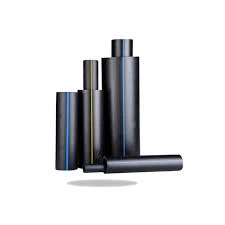Déc . 05, 2024 02:52 Back to list
HDPE Pipe Electrofusion Welding Techniques and Best Practices for Durable Connections
Understanding HDPE Pipe Electrofusion Welding
High-Density Polyethylene (HDPE) has emerged as a favored material for piping systems due to its durability, flexibility, corrosion resistance, and lightweight characteristics. These attributes make HDPE suitable for various applications, including water supply, sewage systems, gas distribution, and industrial processes. However, the effectiveness and longevity of HDPE pipes significantly depend on the quality of joints and connections. One of the most reliable methods of joining HDPE pipes is through electrofusion welding, a technique that ensures strong, leak-proof joints.
What is Electrofusion Welding?
Electrofusion welding is a process that involves the use of electrically heated elements to join two pieces of HDPE pipe. This technique employs specially designed fittings known as electrofusion couplers, which contain built-in heating wires. When electricity flows through these wires, they heat up, melting the surrounding pipe surfaces to create a bond as they cool. This process eliminates the need for additional adhesives or solvents, making it an environmentally friendly choice.
Advantages of Electrofusion Welding
1. Strong Joints Electrofusion welding produces joints that are as strong as or stronger than the pipe itself. This is crucial in applications where pipes are subject to high pressures or varying temperatures.
2. Reduced Skill Requirement Compared to traditional welding methods, electrofusion welding requires less specialized knowledge and training. As long as the operator understands the equipment and follows the necessary protocols, the risk of human error is minimized.
3. Versatility Electrofusion fittings are available in various sizes and configurations, making it adaptable for numerous applications. This versatility allows engineers and contractors to use electrofusion welding in diverse scenarios, from small-scale home installations to large-scale municipal projects.
hdpe pipe electrofusion welding

4. Quality Control Modern electrofusion welding machines often come equipped with features that allow for real-time monitoring of the welding process. This enables operators to ensure that the parameters are met for a successful weld, helping to maintain the integrity of the pipeline system.
The Electrofusion Process
The electrofusion welding process begins with the preparation of the pipe ends. Pipes must be cut squarely, and the surfaces should be cleaned free from contaminants like dirt or moisture to promote effective bonding. Once prepared, the electrofusion coupler is placed over the ends of the pipes. After verifying proper alignment and securing the fittings, the operator activates the welding machine.
The machine establishes a precise current that flows through the heating element of the coupler. This creates a molten layer at the interface of the pipes. The welding process typically lasts for a few minutes, depending on the pipe size and material. Once the heating cycle is complete, the machine will cool down, allowing the joint to solidify into a strong bond.
Applications and Considerations
With its robust and efficient joining capabilities, electrofusion welding is widely used in various sectors, including municipal water systems, gas distribution networks, and industrial applications. However, it is crucial to consider environmental factors such as temperature, humidity, and pipe pressure during the welding process. Adhering to manufacturer guidelines and local regulations is essential to ensure the success and safety of any electrofusion joint.
Conclusion
Electrofusion welding of HDPE pipes stands out as a modern, efficient, and reliable method for creating durable connections in pipeline systems. As industries continue to embrace this technology, the advantages of strength, versatility, and reduced labor requirements make it a go-to choice for engineers and contractors alike. Investing in quality electrofusion equipment and training can lead to significant returns in terms of pipeline integrity and system reliability, thus contributing to the overall success of any project involving HDPE piping.
-
High Transparency PVC Clear Sheet Super Transparency PVC Sheets & HDPE Cutting Board Supplier
NewsJul.04,2025
-
High-Quality PVC-M Pipe Supplier Trusted PVC Pipe Company & 75mm PVC Connection Pipe Solutions
NewsJul.04,2025
-
PVC Transparent Sheet Roll - Durable & Flexible PVC Plastic Sheet Roll for Industrial & Home Use
NewsJun.24,2025
-
High-Quality PVC PPR Pipes and Fittings Durable ERA PPR Solutions
NewsJun.10,2025
-
High-Quality Large HDPE Sheets & Large Diameter PVC Pipe Durable Large PVC Pipe Supplier
NewsJun.10,2025
-
High Density Polyethylene Cutting Board - Durable & Food Safe
NewsJun.09,2025

